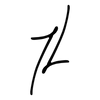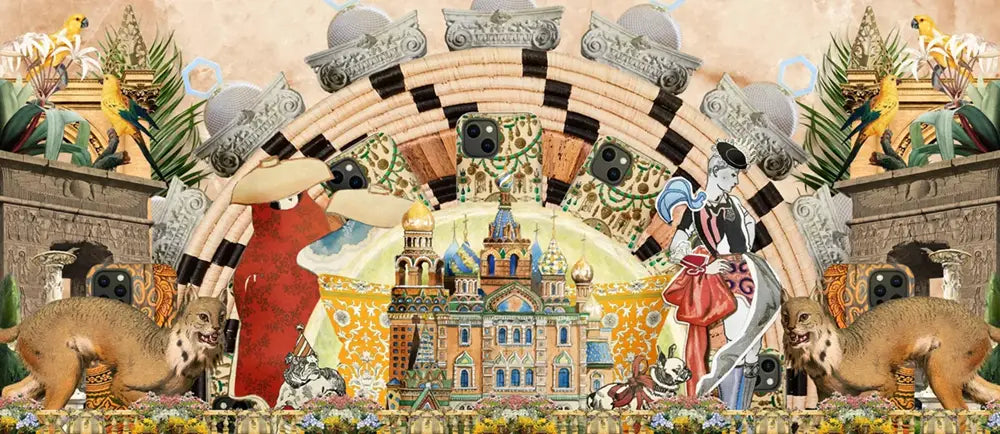Beneath the sodium glow of dockside lamps and the bougainvillea-shadowed stoops of Piraeus, a painter once walked as if through myth’s backstage. Yannis Tsarouchis—exiled prophet of modern Greek eros—held the brush like a liturgy.
He saw the divine not above but among: in the sweat-shadow on a soldier’s undershirt, the sorrow-wrung twist of a tavern dancer’s ankle, the quiet virility of boys leaning against bluewashed walls.
Greece, for him, wasn’t ruins and relic—it was choreography and carnal light. He did not paint fantasies. He excavated a country’s hidden self: its repressed tenderness, its sanctified ordinary.
With every icon reframed, every body re-seen, he redrew Olympus in the form of a sailor’s grin. This was theology without dogma, mythology without marble.
In Tsarouchis’s pantheon, saints weep, soldiers tremble, and the erotic is civic. Against regime, religion, and rigidity, his canvases became a quiet insurgency—each pigment an act of memory, desire, and national reckoning.
Key Takeaways
- Tsarouchis reconfigured Greek identity by merging homoerotic intimacy with Hellenic tradition, painting ordinary men as modern mythological figures rooted in Byzantine, folk, and Archaic symbolism.
- He refused the binaries of East and West, instead forging a singular aesthetic where Mediterranean light and Orthodox color theory challenged the European avant-garde’s colonial gaze.
- His treatment of uniforms—military, sailor, police—exposed state-sanctioned masculinity as vulnerable, sensual, and defiantly tender, in sharp opposition to nationalist propaganda and heteropatriarchal norms.
- The zeibekiko, a solo male ritual dance, became Tsarouchis’s visual signature of erotic solitude and resistance, transforming folk performance into high aesthetic philosophy.
- In life and exile, his art was both protest and preservation, archiving a Greece that state censors sought to erase—and in doing so, creating a canon for queer visual culture long before it had a name.
Origin Mythologies: The Light of Piraeus
Beneath the creaking ropes and rust-colored haze of Piraeus, where ferries bark their departure hymns and boys whistle through alleyways lined with ouzo-stained cafés, Yannis Tsarouchis first opened his eyes to a city scripted like a myth. The port was less a location than a tableau: blue uniforms shimmering like the Aegean, priests flanked by fishmongers, marble lintels weathered by breath and brine. Here, even the dust held lineage—Ottoman, Venetian, and Byzantine fragments colliding in barbershops and bouzouki halls.
Tsarouchis called it theater, but it was more than proscenium: it was shadow-play reincarnated. Karagiozis—the crooked-backed, long-armed puppet hero—flickered behind backlit muslin in tavern basements, casting silhouettes that mirrored the artist’s own mythic obsessions. These early encounters formed his grammar of gesture, his syntax of longing. The folds in a fustanella, the flash of a sailor’s epaulette—everything became iconographic.
Before Paris, before palettes broke into riot, before bodies were devout and dangerous, there was this: a boy tracing gods in grime on the dockside walls of Greece.
Athens to Paris: Painting Against the Grain of Modernism
In the chill of Athenian studios, where plaster torsos leered beneath fascist chandeliers, Tsarouchis trained not in neutrality but in friction. The Academy taught obedience—shadow as virtue, oil as obedience—but his eye always slipped. He saw light in heresy. Even before Paris, he began treating the male form not as anatomical study but as metaphysical provocation.
In 1935, Paris cracked open the egg of his restraint. He encountered Giacometti’s bone-thin specters, Matisse’s brazen chroma, the smoky theology of Picasso’s forms—but refused to kneel. Tsarouchis didn’t mimic, he metabolized. Where others pursued rupture, he pursued memory. His palette, thick with ultramarine and coral, was no homage to the fauves—it was hymn and historiography.
Unlike the Western modernists who abstracted until nothing human remained, Tsarouchis painted the body as archive. Greekness wasn’t geometry; it was blood, fig leaves, colonnades, and sweat. In his hands, the male figure bore not just muscle, but myth—etched in shadow, crowned in sunlight, carved from exile.
The Greek Palette Reclaimed
In 1940, Tsarouchis unlearned chiaroscuro. He turned from the Renaissance’s cathedral of shadows and stood instead beneath the searing, color-true sky of his homeland. Greek light—merciless, sacred, surgical—had no patience for soft gradation. He didn’t theorize this shift. He enacted it. A Hellenistic Medusa mosaic pinned beside a living model taught him what no professor could: that Greek painting did not simulate depth—it summoned presence. Color here was not tone, but invocation.
Nude with Oleanders emerged like a prophecy. Not posed but planted, the youth stands: foot forward, arms at rest, gaze absent of seduction yet saturated with consequence. He is kouros and corpse-in-waiting, ephebe and elegy. Unmixed whites frame him like marble, yet his skin breathes. Pink oleanders—half shrine, half temptation—anchor him to both funeral and field. In this light, death isn’t dramatic. It is delicate. And Greekness isn’t allegory. It’s anatomy. The body as the final surviving dialect of a language buried in ruins.
Erotics of the Uniform: War, Flesh, and Subversion
When Tsarouchis painted uniforms, he wasn’t celebrating patriotism—he was dissecting it. The war gave him no myth to preserve, only silhouettes to question. He saw what the state preferred hidden: bodies stripped not of cloth but of pretense. Epaulets drooped, boots relaxed, shirts unbuttoned into postures of fatigue that flirted with reverence. The barracks became his new atelier, the soldier his surrogate saint.
In The Forgotten Garrison, the trio of conscripts recline without threat, urgency, or duty. Their limbs intersect, their gazes skim, their smudged torsos shimmer with leftover sweat and shared silence. There is no battlefield here—only aftermath, erotic and indistinct. The absence of discipline creates something closer to communion.
What Tsarouchis revealed was not scandal—it was scripture. Homoeroticism wasn’t subtext; it was sacrament. And for daring to paint the sacred in the syntax of desire, he was censored, scorned, exiled. Yet the paint remained. It dried into memory, resisted erasure. It remembered what states forget.
Zeibekiko as Counter-Choreography
He found his anthem in the taverns, not the temples. The zeibekiko—staggered, solo, raw—was not a performance. It was an untranslation. A man alone in a circle bending to the gravity of longing. Neither folkloric nor theatrical, this was masculinity danced from the gut: sorrow staggered into form, resistance coiled into motion. Where state rituals stiffened, the zeibekiko swayed.
From 1957 onward, Tsarouchis returned to it like a liturgy. He painted not just gestures, but grammar: a bent knee that mourns, a flung arm that accuses, a downcast face etched with unspoken grammar. In this vernacular of limbs, he found a syntax of erotic refusal. The dancers did not ask for witness. They demanded none. Their bodies spiraled into themselves—not to be seen, but to survive.
In these canvases, Tsarouchis replaced icon with instinct. The tavern became temple. Each dancer a votive. Each movement an elegy disguised as rhythm. Masculinity, once a monument, now moved.
Exile, Icons, and Afterlife
Exile was never absence for Tsarouchis. It was aperture. When the junta clamped down on Athens in 1967, he left not to vanish, but to see more clearly. Paris, with its soot-smudged cathedrals and queer cafés, offered no homeland—but it let him breathe. The academy back home had called him pervert, degenerate, heretic. Abroad, he became archive, oracle, fugitive prophet.
His canvases grew quieter, but never dimmed. He designed Trojan Women in an empty lot. Painted grief on brick, not marble. For him, tragedy belonged to laundromats and love affairs, not museum vitrines. The gods weren’t dead—they’d just changed costume.
In death, Greece welcomed him back with laurels it once withheld. Today, his portraits hang side by side with the very myths they once defied. What was once censored now sanctifies. A boy in a sailor cap. A man mid-spin. A gaze that won’t avert. In these, Tsarouchis built the afterlife he was denied in life—visible, unfaltering, Greek.
Final Pantheon: Gods, Revolution, and the Afterlife
Tsarouchis belonged to the Generation of the ’30s, but he didn’t echo it—he fractured it open. Where others reached backward for national coherence, he thrust forward, dragging antiquity into the alleyways of Athens. His stage wasn’t idealized—it was asphalted. Seven Against Thebes was mounted in a vacant field, not Delphi. Myth bled into motorbike grease.
He never painted gods as escape. He made them mundane. A Hermes with cigarette ash on his chest. A Dionysus with grease under his nails. These weren’t metaphors. They were reentries. Ancient Greece didn’t die. It migrated—into barracks, bouzouki joints, boys’ bedrooms.
The nude, in his work, always negotiated: eros and history, flesh and law, triumph and exile. He painted palikaria and wanderers as both sanctuary and spectacle. In the chromatic fog of his afterlife, what survives is not allegory—it’s atmosphere. He didn’t just expand Greek painting. He turned it inside out. And in that inversion, he found a future. One still unfolding.
Reading List
- Bittencourt, Frank. “Frank, Greek, and Gay: Modernist Painter Yannis Tsarouchis Is Finally Getting His Due.” Hyperallergic, July 21, 2021.
- Harrity, Christopher. “Artist Spotlight: Yannis Tsarouchis.” The Advocate/Out, September 10, 2011.
- Kontrafouri, Filio. “Works from Greece’s Most Celebrated Painters Lead Massive Art Auction.” GreekReporter.com, April 16, 2025.
- Konomis, Maria. “Yannis Tsarouchis’ Experimental Productions of Ancient Greek Tragedy.” Logeion 5 (2015): 372–397.
- Kroll, Julian. “Yannis Tsarouchis: Dancing in Real Life.” Gayletter.
- Schina, Athena. “The Beloved’s Bright Wings: Yannis Tsarouchis’s Queer Portraits.” The Gay & Lesbian Review (2022).
- Wichmann, Anna. “Yannis Tsarouchis: The Voice of Modern Greek Art.” GreekReporter.com, May 6, 2025.
- Wrightwood 659. “Yannis Tsarouchis: Dancing in Real Life,” Press Release. April 2, 2021.
- Yannis Tsarouchis Foundation. “Biography, 1910–1989.” Accessed 2025.
















